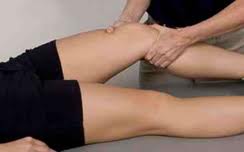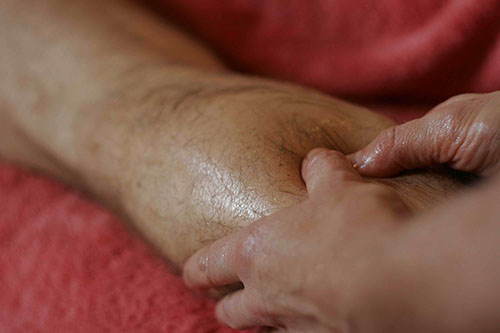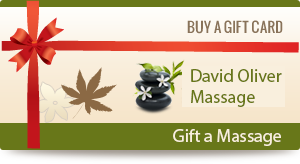Massage and Sport
There are many reasons why we exercise, we may want to achieve a certain level of fitness, strength or goal. It can often be quite strenuous and stressful trying to achieve this and tension can build up within the body. Massage plays a part in every form of sport or exercise. It can increase endurance, control fatigue and help people feel better when used as part of a regular health program.
Sports massage can be carried out before, during, or after training. It can speed muscle recovery rates as it eliminates irritation from waste. By helping reduce fatigue and aid recovery, massage enables more productive training with longer, more effective workouts. The ultimate spin-offs are better performance with fewer injuries.
There are four types of sports massages:
Treatment of Sports Injuries

|
Massage also helps recovery from soft tissue injuries such as sprains and strains. Everybody experiences some form of stress through work, family, the environment and society. Mental tensions, frustrations and insecurity cause the most damage. Hormones released by stress actually shrink the vessels, inhibiting circulation. Sports massage can treat a variety of ailments and injuries that may occur as a result of exercise. Over training may often create problems and imbalances in the soft tissues. If ignored it may become chronic and hinder the rate of improvement, but also in many cases your performance will suffer and ultimately, you may be susceptible to developing more conditions that are serious. Certainly, you’ll not be able to perform at your best, you may be more at risk from other traumatic forms of injury.
• Headaches & migraines
• Frozen shoulder
• Sore shoulder and neck
• Back pain & sciatica
• Tennis and golfers elbow
• Sprains, strains and tears
• Over-use injuries
• Shin splints
What to expect from a Sports Massage
Sports massage is a type of Swedish massage that stimulates circulation of blood and lymph fluids. The strokes used in sports massage are almost always directed towards the heart, a technique designed to increase blood and lymph flow. But you may find that your therapist sometimes massages you with shorter strokes in the opposite direction – this is designed to stretch your muscle fibres. Your massage will begin with a variety of stroking movements (‘effleurage’) usually carried out with the whole palm of the hand and the fingers. This helps you become accustomed to your therapist’s touch, warm your body’s tissues and increase your blood flow. It will also help the therapist to identify any tender areas at the outset, so less pressure can be applied later on. Some sports massage movements use trigger point therapy to break down adhesions (knots in the muscles) and increase range of motion.
Your therapist will then use a technique called “petrissage” – kneading designed to work on deeper tissues, to mobilise fluids, stretch muscle fibres and aid relaxation. After this comes the “frictions” technique – aimed at breaking down lesions and even scar tissue, and separating muscle fibres. Frictions might feel uncomfortable or even slightly painful, so don’t be afraid to tell your therapist to go more gently on particular areas. A sports masseur will use a variety of techniques depending on what you need.
The strokes used in sports massage are designed to increase blood and lymph flow and to stretch your muscle fibers. This is achieved with a technique called Myo-fascial release – a slow stretching of the fascia and muscles. This will help warm your body’s tissues and increase your blood flow.
Afterwards, you may feel a bit sore, tired or achy after a sports massage, so give it is best to give yourself plenty of time to lie down and relax. It’s not a good idea to eat a heavy meal or drink alcohol in the hours leading up to your massage. Massage can have a dehydrating effect on the body so have a few glasses of water afterwards.
When Should I Get A Sports Massage?

|
Sports massage is not designed to relax and pamper you – its purpose is to speed up your recovery time from exercise and help to prevent future injuries.
A sports massage is a good choice if you have a specific problem — a tender knee from running, for instance. It is also be a good idea to see a movement therapist, who can help you identify and correct the movement pattern that might be causing your injury in the first place. The therapist generally focuses in on the problem area — a frozen shoulder or pulled hamstring, for instance — rather than giving you a full-body massage.
Sports massage might not be suitable for someone with diabetes so you need to speak to the therapist before you start if you are concerned. You must tell your therapist if you are – or think you might be – pregnant.
Sports massage may also not be suitable for people with acute or long-term mental health problems. Sports therapists are trained to recognise when and whether a massage will do their client more harm than good. If such a situation arises, you will be referred on to another health professional.
There are various things to watch out for before you have a sports massage.
It is not recommended if you have:
Benefits of Sports Massage
Sports Massage also has other benefits that allow you to train or exercise more efficiently. The benefits include:


